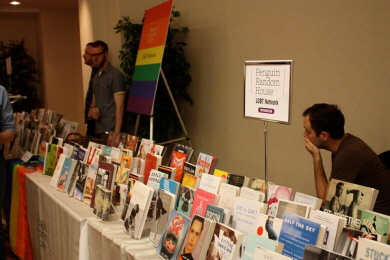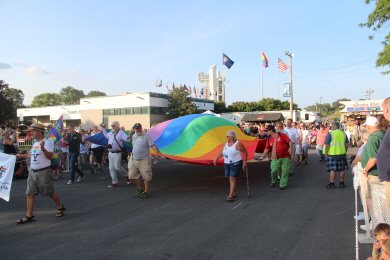
Nearly 20 years ago, a separate office dedicated to LGBT students on campus with one staff member set foot on NYU. Since then, the NYU Lesbian, Gay, Bisexual, Transgender, and Queer (LGBTQ) Student Center has grown to a pivotal place that accommodates LGBT students on the NYU campus, with two full-time staffs and three graduate assistants – a size that only a handful of universities in the world can afford as a LGBT center.
The center is comprised of a cyber-center, a lounge, and a library for all students, but these facilities are more oriented for satisfying the needs of the LGBTs.
“It is really important to create spaces where LGBT students can find the communities that they can feel affinity with,” said Monroe France, the interim director of the NYU LGBTQ Student Center. “Also, we wanted our LGBT students not only to engage with their social lives, but also enhance their intellectual capabilities in safer environments.”
Over the past year, the center has been working closely with students on a project, which is to identify gender-neutral restrooms on campus and locate them on a campus map for gender non-conforming students. Gender neutral restrooms are for people of any gender identity, and is considered a symbol of inclusion for people who identify outside of gender binary. They have been around the campus for several years, but have not been identified as “gender-neutral” restrooms so far.
“The project has really been driven by our students,” emphasized Lukas LaRiviere, the program administrator of the center. “Students who closely worked with our center went around the campus and surveyed students to ask if they knew any gender neutral restrooms in campus buildings.”
One of the features that the center has is that it not only works on inclusion on the students’ part, but also extends its efforts to every part of the school community, by holding events and programs for faculty and staff as well.
For example, it often holds the Safe Zone program, a program dedicated for training faculty and staff to better understand the LGBT population on campus. Also, the center recently created a poster titled “Top 11 things that faculty and staff should know about LGBTQ lives in NYU.”
“Our belief is that to fully support our students, we first have to make a better campus,” France said. “That starts from educating faculty and staff.”
Professor Roberto Perino, who teaches Opera and Italian at NYU and identifies as gay, revealed that he never had any problem teaching and engaging with members at NYU as a gay person.
“I had no problem with introducing my partner Brian when I met people from school,” professor Perino said. “Also, both students and I have no problem with asking if they have same-sex partners in any of my classes.”
Many students acknowledge the endeavors of the school and professors for creating an inclusive educational environment.
“Professors usually do not call students Mr. or Mrs., making sure for transgender people to feel included,” said Mason Fitch, a student who studies at NYU School of Law.
Another feature of the center would be its location. As NYU is fully immersed in the city, it can bring in numerous important figures in the fields of LGBT activism derived from the diversity of LGBTQ organizations based in New York City.
“We are able to bring quality resources onto our campus that most of the universities in the rest of the world cannot easily acquire,” France said. “For us, it’s very accessible.”
Reciprocally, the center itself becomes a very good resource for LGBT communities in New York City as well as on campus.
“In a big city like New York City, the center is an indispensable place for the LGBT population at NYU and even for the LGBT communities outside,” said Collier-Pitts, a junior and an undergraduate student officer working at the center.
The center also works closely with numerous LGBT student organizations on campus. For example, students who have various interests gathered to create Real Queer Film Series, a program that brings in LGBT identified filmmakers. There are also numerous sports teams comprised of both LGBT students and allies.

“I realized that students who identify themselves as LGBT don’t necessarily regard their sexual orientation or gender identity as the most important aspect out of all different identities that they have,” LaRiviere observed. “It could be just another facet of their identities that others become more aware of.”
France believes that as long as different forms of bias such as homophobia and heterosexism exist in the world, separate and independent centers dedicated for LGBT population should persist on campus.
“University is just another part of the world,” France stressed. “If there is a demand in society, that means there is also the same demand on campus. We have the responsibility to satisfy students’ needs.”
Park Kyoung-eun
kathypark226@ewhain.net

